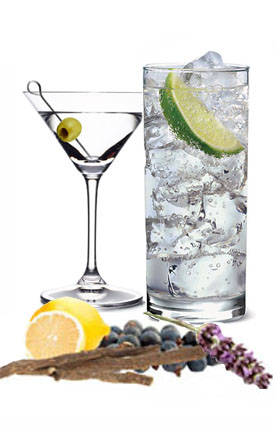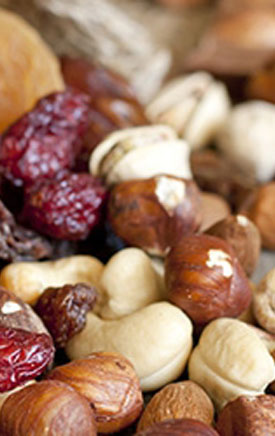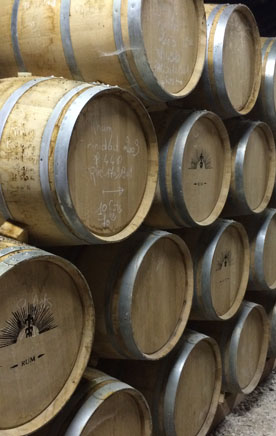Catalonia lies at the northeast of Spain, bordering the Pyrenees Mountains and France to the north. The Mediterranean Sea is towards the east, Valencia to the south and Aragon to the west. The winters are not too severe and summer is uniformly sunny and hot, with cooling breezes from the Mediterranean. It is an ideal location for wine making. One can choose to spend time in Barcelona, go to the beach or explore the Pyrenees. Through August of 2013 there were over 42.3 million international tourists visiting Spain. In 2012 Catalan entertained over 15 million international visitors, which represents 25% of all international arrivals in Spain. Catalan is a separate language and not a dialect of Spanish and the people consider themselves Catalan, not Spanish. There has even been much talk of becoming a separate country. But this is not a political story but one about the best of the Barcelona area.
The name Barcelona comes from the Barca family of Carthage who ruled the area in the 3rd century B.C. Barcelona is the capital of Catalonia and the second largest city in Spain after Madrid, with a population of 1.6 million (2012) and 3.2 million in the greater metropolitan area.
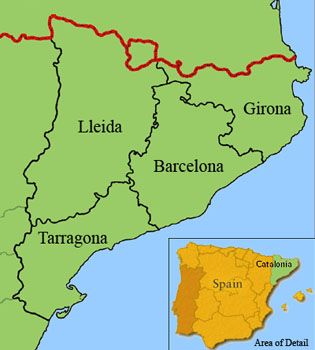
Barcelona is the 16th-most-visited city in the world and the fourth most visited in Europe after Paris, London, and Rome. The city has a Mediterranean climate, with mild, humid winters and warm, dry summers. Barcelona beach was listed as number one in a list of the top ten beach cities in the world according to National Geographic Magazine and the Discovery Channel. At one time the seaside in Barcelona was completely occupied with industries. This was changed in 1992 when the city hosted the Olympic games. The authorities shifted the industries and converted the seaside area into one for leisure, with lots of hotels, restaurants, bars and of course, new beaches.
Saint Georges Day is the national feast day in the region and on this day it is a tradition to present your friends and loved ones with roses and books. This was the inspiration for UNESCO to declare April 23rd as the International Day of Books. Both Cervantes and Shakespeare passed away on that day.
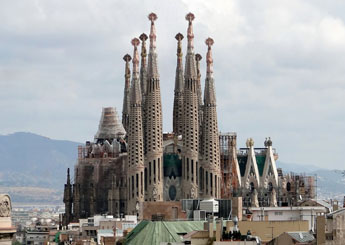
Temple de la Sagrada Familia- Designed in the shape of a Latin cross with five hubs and three facades. The temple is most famous for its slender towers that rise nearly 300 feet above ground and with pinnacles decorated with ceramics. The Cathedral's building process started in 1882, and is still under construction. Anton Gaudí worked on this project for more than 40 years. If you book online before your trip you can skip the long lines. Number of visitors - Almost 3 million.
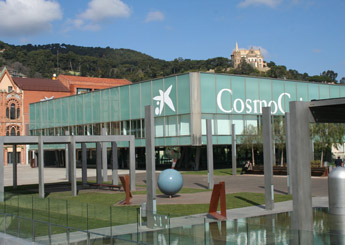
CosmoCaixa Barcelona- Barcelona's science and nature museum. CosmoCaixa was renovated in 2004 and in 2006 it received recognition as Europe's best museum. Walk through a rainforest, explore the universe at the planetarium or visit the toca toca! where you can play with animals such as starfish, fish and desert mice. Number of visitors - 2.6 million.
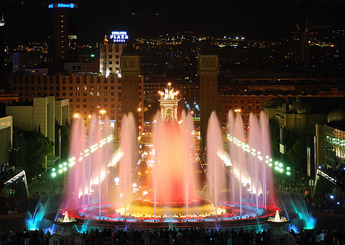
The Font Màgica Fountain of Montjuïc— The Magic Fountain was built in 1929 as one of the main attractions for the Barcelona World Fair. There are water, light and music shows in the summer from Thursday to Sunday and admission is free. Site of the La Merce Festivity fireworks display. Number of visitors- 2.5 million.
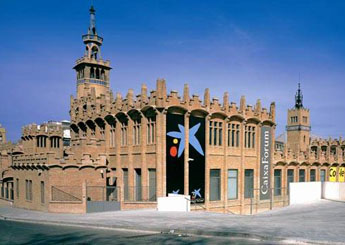
CaixaForum Barcelona- An exhibition hall owned by the Catalan bank La Caixa. The museum houses art exhibits and is free to the public. Number of visitors- 1.6 million.
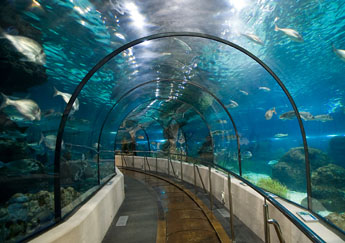
Barcelona Aquarium- The 35 aquariums at the facility are home to 11,000 animals representing 450 species. You can go into a tunnel under the water while the sharks swim right over your head. Number of visitors- 1.6 million.
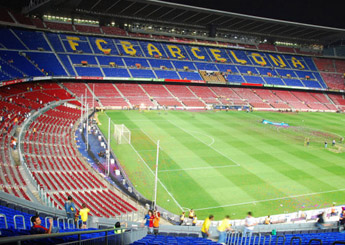
Museu FC Barcelona, Camp Nou - FC Barcelona is the most famous sport club in Barcelona. The club has their own stadium with capacity for 100,000 people, which is the biggest stadium in Europe. Walk the self-guided tour in the Camp Nou, taking you through the changing rooms, the press room and the players' dugout. The tour ends in the Barcelona Museum. Number of visitors- 1.4 million.
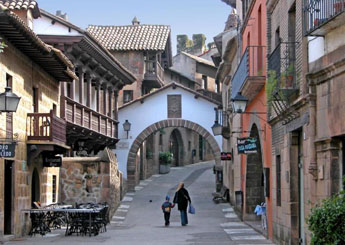
Poble Espanyol de Montjuïc- In this Spanish village you can see architecture and crafts from all over Spain. The village was built for the World Exhibition in 1929 and displays the building styles which are typical of the various provinces of Spain. West of the main square lie a number of picturesque little streets with a large number of craft-workers. A new entertainment center was added in 1988 with bars, restaurants, clubs and a theater tent. Number of visitors - 1.4 million.
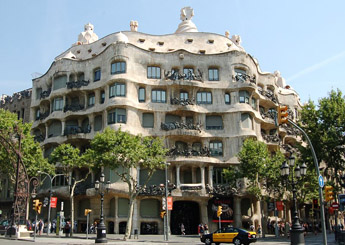
Gaudí's La Pedrera (Casa Mila)- La Pedrera (The Quarry in English) was built by Gaudí's between 1906 and 1910. The house is designed as an apartment building and initially the plan was to have two indoor ramps so the residents could drive their cars all they way up to the apartment doors. This was not possible to implement so instead Gaudí built the first garage in Barcelona. Number of visitors- 1.4 million.
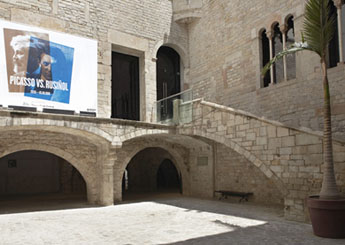
Museu Picasso- The Picasso Museum is Barcelona's most visited art gallery. The museum mostly displays his early works, Since all his works are in chronological order, you can easily follow the artist's development. Picasso spent many years of his life in Barcelona. Number of visitors- 1.2 million.
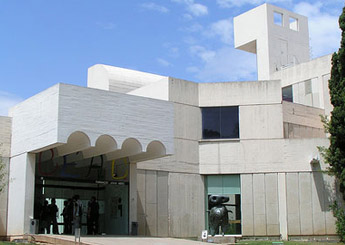
Fundació Joan Miró- The Fundació Joan Miró contains numerous works of this painter and sculptor. The Fundació Joan Miró is a foundation, which operates the museum on the mountain Montjuïc. From the terrace of the museum you have a wonderful view of Barcelona. Number of visitors- 1.1 million.
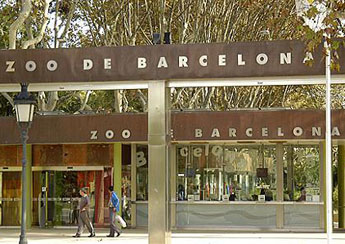
Zoo Barcelona- There are over 500 different species at the Barcelona Zoo. Learn about everything from seals and dolphins to gorillas and giraffes! There is also a farm for children where they can pet goats and lambs. Number of visitors- 1.1 million.
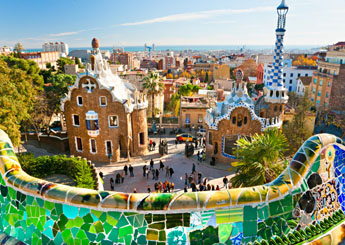
Park Guell- A World Heritage Site garden complex with Gaudí architecture and a Gaudí museum built from 1900-1914. At the moment it is free (though they will soon charge admission) so there are no official statistics as to number of visitors. Park Guell is situated on a hill with great views of the city.
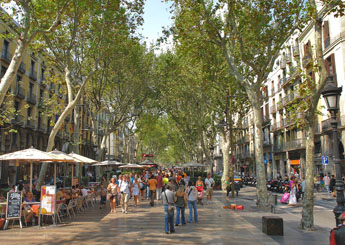
La Rambla Street- The centre of Barcelona is the 1.2-mile La Rambla Street. It is filled with bars, restaurants, shops and street artists. Over 150,000 people walk along the street every day. Walk down the Portal de l'Angel and you will be one among approximately 3,500 others who throng the street every hour and make it the most walked street in Spain.
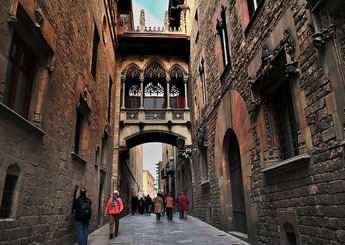
Barri Gòtic- The Gothic quarter in the centre of old Barcelona with some of the buildings going back to the Roman era. Medieval architecture is quite common here and the attraction of these buildings brings in over a million tourists to Barcelona every week. One can view the remains of the squared Roman Wall. El Call, the medieval Jewish quarter, is located within this area too. Most of the quarter is closed to regular traffic.

Flamenco Shows- Enjoy an evening of passion, music and traditional Spanish dance with the experience of a flamenco show. Flamenco Show ticket prices depend on the option you take, either with or without a meal. There are also different prices for adults and children.
TOURS:
Hop on Hop Off Bus Tour- This is an easy way to get around to see the main sights of Barcelona. You can simply hop on the bus, and hop off to see the sight and then, hop back on another bus to go to the next sight. Commentary is given in 10 different languages. Ideal for those who want to see an overview to the city without the planning.
Barcelona Walking Tours- Much of central Barcelona has been pedestrianized, with wide-open boulevards that make walking tours a very pleasurable way to visit the city. In the Barri Gotic area (historic quarters) you have nearly a whole day's worth of sights to experience alone without the need for taking any form of public transport. In this area you will see the neighborhoods where the great painters Picasso and Miró grew up. You will also see examples of Catalan architecture the most notable being Barcelona Cathedral.
There's also: Gothic Quarter (Historic Quarter) Walking Tour, Modernist Walking Tour, Picasso Walking Tour, Gourmet Walking Tour, and Tapas Evening Walking Tour.
Barcelona Tour By Bike- Sight seeing by means of a bike is one of the most enjoyable and easy ways to see the city. You will have a very fit guide who will give commentary as you go. Sights included are Cuitadella Park, Barcelona Cathedral, Olympic port and Gaudí's Sagrada Familia. The Citibank NYC bike plan used Barcelona as an example.
Catalunya Bus Turistic (Wine & Cava Route)- These tours will take you to the Penedès region of Catalonia for a guided tour and tasting at Jean Leon Winery. Then another guided tour where you match three cheeses to three wines at Bodegues Torres. A final guided tour with a cava tasting along with Catalonian tapas at Freixenet. Children are free. Duration: 8.5 hours. 8:30AM Depart from Barcelona. Return around 4:30PM.
Inclusion: English-speaking guide / Wine tasting / Tapas / Cheese tasting
Regional Spanish Wine
Wine has been produced here since the time of the Romans, who started planting and producing grapes near Tarragona (which was the Iberian capital at the time). Since then, the winemaking region spread and flourished until the 19th century Phylloxera crisis killed most of the red grapes grown there. Approximately 25% of the total wine production in Spain is produced in Catalonia. Spain has more land area in grape production, 2.9 million acres planted, than any other country. It is #3 in global wine production behind France and Italy (the U.S. is #5). In consumption, Spain is 9th in the world.
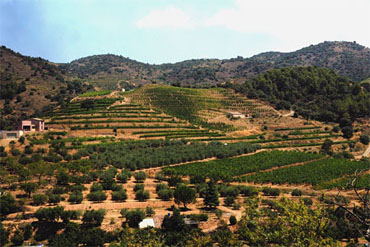
Priorat- Old wine making region with a modern twist in this tinny, mountainous region near Barcelona. Terraced hillsides of slate are common with very old vines of Garnacha and Cariñena, typically blended with small amounts of Cabernet Sauvignon and Merlot. These are massive, inky wines of distinct character and reputation. Stay at the charming Hostal Sport in the town of Faiset with its private garden and large wine collection. Albert Costa, the winemaker owner of Vall Llach wine cellars in the town of Porrera is well worth looking up and visiting. His superb Priorat wines are available in the US. If you have time take a tour of the partially restored Carthusian Monastery Scala Dei and the tiny city of Siurana, high up on a narrow winding road. Be prepared to walk to the walled city.
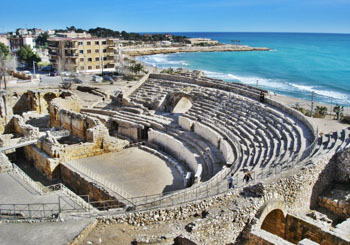
Tarragona- If you have an extra day the trip to Tarragona is very worthwhile. The city has managed to combine its Roman legacy, recognized as a World Heritage Site, with its medieval past. There is 9 miles of Mediterranean coastline and beaches surrounding the city. During mid-September, the Santa Tecla Festival honors the city's patron saint. The highlight of the festival is the champion human towers in the main square. Some were 9 levels high (think 50 feet, with several hundred participants) with a 4-6 year old child reaching the top. The best of the organizations sponsoring the towers came from Tarragona. The Hotel Ciutat de Tarragona is perfectly located in the center of the city.
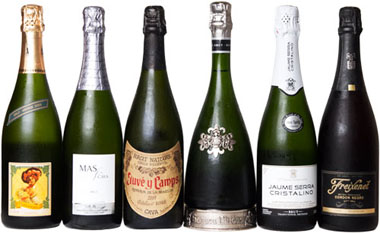
Penedès Spanish Wine Region is close in proximity to Barcelona on the Mediterranean coastline. The region is known for its Cava. Cava is the Spanish term for sparkling wine. It is produced in the Traditional Method, much like Champagne, where the wine ferments in the bottle, until it is ready to be corked. Cava is usually a blend of 3 grapes: Viura (aka Macabeo), Parellada, and Xarel.lo. The name Cava derived from the "caves" where the sparkling wine was created. Cava wines spend 9 months aging in bottles following fermentation. 90% of Spanish Cava wines come from the Penedès region. Most people know the brands Freixenet & Codorniu, but there are several small quality producers, such as Recaredo– where you can tour the cava cellar in Sant Sadurni de Noya before your wine tasting. If you have time, walk a block to Simon Chocolates where you can sample their small batch delights.
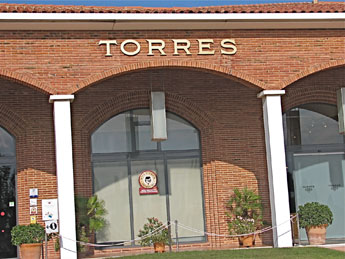
Visit Torres- probably the best known Spanish wine in the US and Spain's largest family-owned winery. In 1870, Jaime Torres established a winery at Vilafranca del Penedes, an hour plus drive from Barcelona. In 1979, Torres Corona Mas La Plana 1970 beat out Chateau Latour and other Bordeaux wines in the Gault Millau Paris Olympiad blind tasting. The winery is run today by Miguel Torres Jr., with wineries in Chile, California, as well as Catalonia, Rioja, Toro, Ribera del Duero and Conca de Barbera. They have introduced grape varieties such as Chardonnay, Riesling, Sauvignon Blanc, Cabernet Sauvignon, Cabernet Franc and Pinot Noir, not commonly used in Spanish wines. It seems like a Disney theme park with the tram tour through a tunnel under the winery. The tram also takes visitors through the grounds and to view a film about the firm. There is a museum, tasting room and gift shop. If you are a special guest you might be invited to lunch with Miguel Jr. in the nearby town where his family lives.



